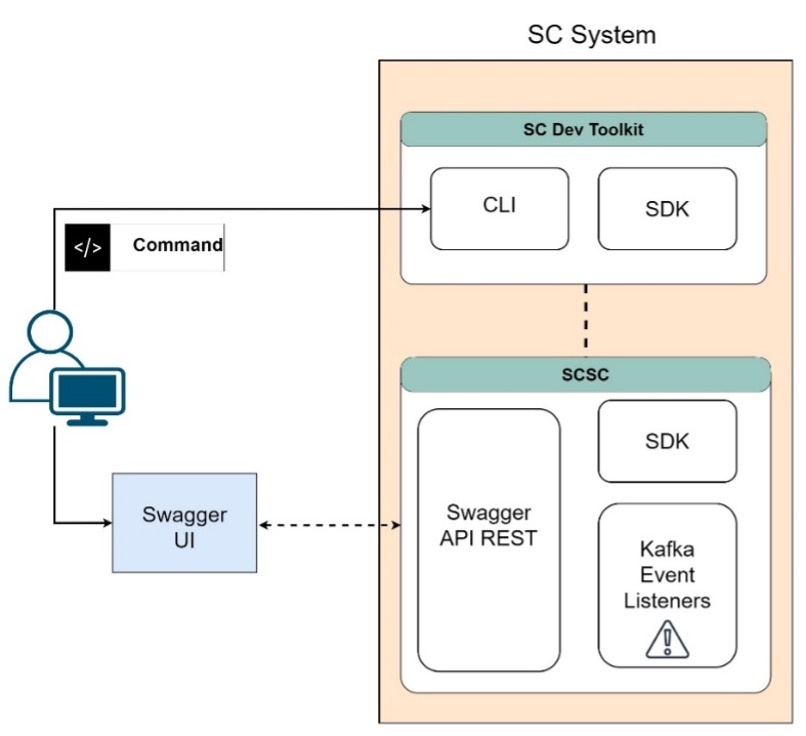
Keep up to date with our innovative initiatives.
Sign up here
The 6GENABLERS-DLT project aims to implement a marketplace for the telco industry that embodies agility, transparency, security, and efficiency.
The Smart Contract (SC) System is a key part of the 6GENABLERS Marketplace. It enables the interaction with the Distributed Ledger Technology (DLT) in a programmatically way and represents the entry point for the stakeholders to:
The system comprises two large components, the SC Development (Dev) Toolkit and the SC State Composer (SCSC), as shown in the figure below.

SC Dev Toolkit
The SC Dev Toolkit is oriented to developers, who, through a Command Line Interface (CLI), can generate and validate the offer and order models of a service prior to its inclusion in the Marketplace.
These offer and order models are based on the official TM Forum specifications and provide a robust data model to represent all the situations and desired options (license terms, agreements, attachments, technical requirements, etc.) for different types of assets, such as Virtual Network Functions, Network Services, network slices or edge computing resources, among others.
The Dev Toolkit comprises the CLI module and the Software Development Kit (SDK). The later has the logic of the system’s functionality, with functions such as document rendering, template generation or model validation.
SC State Composer
The SCSC has a cloud-native approach based on Kubernetes, which facilitates an architecture focused on microservices, specifically a Rest Application Program Interface (API) that uses Swagger and Kafka listeners service to process alerts and events from external systems. Besides, the SCSC also has access to functionality that resides in the SDK.
Once developers have prepared the offer and order models using the SC Dev Toolkit, they send them to the SCSC through the Swagger User Interface (UI) to be included in the Marketplace. When a service is ordered, then a new model called SC State, which contains the relevant information of the instantiation of that service and its related current and future events, is automatically generated.
Therefore, as anticipated, the SC System is an essential element of the Marketplace, as it generates and uploads the deployed offers. Additionally, it constantly interacts with the DLT and its APIs for any modification in offers, orders, and SC States.
Author: Daniel Ruiz, Researcher at ATOS